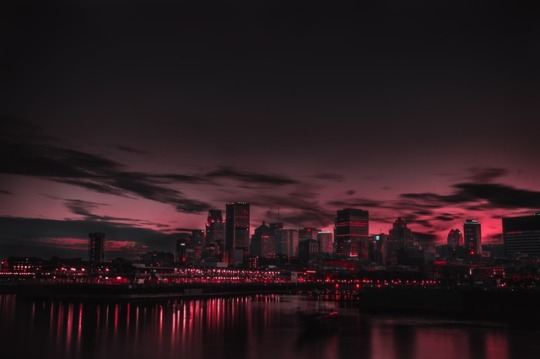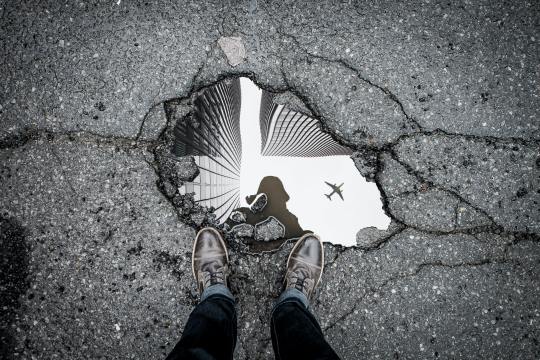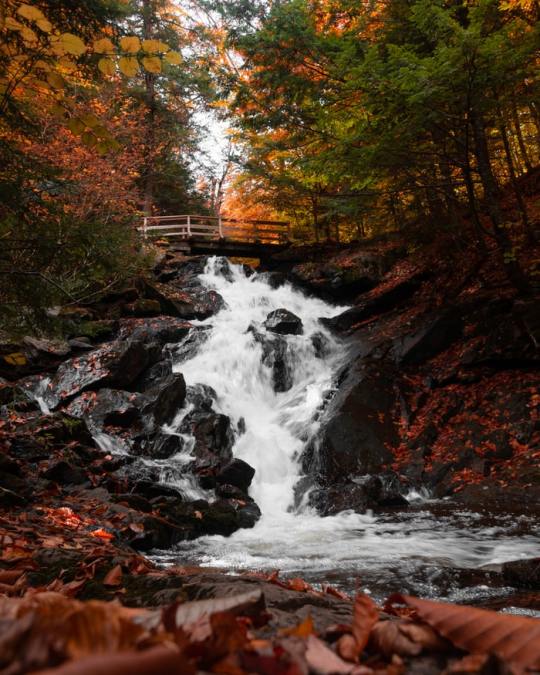#Marc-Olivier Jodoin
Explore tagged Tumblr posts
Text

Photo by Marc-Olivier Jodoin on Unsplash
* * * *
Freedom
Perhaps we humans have wanted God most as witness to acts of choice made in solitude. Acts of mercy, of sacrifice. Wanted that great single eye to see us, steadfast as we flowed by. Yet there are other acts not even vanity, or anxious hope to please, know of -- bone doings, leaps of nerve, heart- cries of communion: if there is bliss, it has been already and will be; out- reaching, utterly. Blind to itself, flooded with otherness.
- Denise Levertov - [Echoes of Panhala]
23 notes
·
View notes
Text
0 notes
Text
Land price comparison between Quebec and France
When it comes to buying land, many factors come into play. Location, size, and amenities can all affect the price of a piece of property. In this essay, we’re going to explore the differences in land prices between France and Quebec.

Photo by Marc-Olivier Jodoin on Unsplash
Land prices in France are generally higher than those in Quebec. There are several reasons for this disparity. The first is that France has a higher population density than Quebec. This means that there is more demand for land in France, which drives up prices. Additionally, the cost of living in France is higher than in Quebec, leading to higher land prices.
Another factor that affects land prices in France is the country’s strict zoning laws. These laws restrict the development of new land, particularly in urban areas. This scarcity of land drives up prices, as demand exceeds supply. In contrast, Quebec has more relaxed zoning laws, allowing for more development and thus keeping land prices more affordable.
A third factor to consider is the agricultural industry. France is known for its agricultural production, including wine, cheese, and other specialty foods. As a result, agricultural land in France is highly sought after and commands a premium price. In Quebec, while agriculture is also an important industry, the demand for agricultural land is not as high, leading to more affordable prices.

Photo by Ilnur Kalimullin on Unsplash
It’s important to note that land prices can vary widely within both France and Quebec. In France, for example, the price of land in Paris is much higher than in rural areas. Similarly, the price of land in Quebec City or Montreal may be higher than in more remote regions.
When comparing land prices between France and Quebec, it’s important to consider the average price per square meter. In France, the average price of land is around €194 per square meter, while in Quebec, it’s around €53 per square meter. This significant difference illustrates the higher cost of land in France compared to Quebec.
There are also differences in the types of land available in each location. In France, you’ll find a wider range of land options, including vineyards, chateaux, and historical properties. These unique offerings can come with a hefty price tag. In Quebec, land options might include waterfront properties, rural acreages, and forested lots. These properties tend to be more affordable than their French counterparts.

Photo by Matthieu Joannon on Unsplash
When considering land prices in France and Quebec, it’s important to think about the investment potential. Land in both locations can be a valuable asset, appreciating over time and offering various development opportunities. However, the costs associated with purchasing land in France may be higher, making it a more substantial initial investment.
In conclusion, land prices in France are generally higher than those in Quebec. This can be attributed to factors such as population density, zoning laws, and the demand for agricultural land. However, there are also variations within each location, with urban areas commanding higher prices than rural regions. When comparing land prices between France and Quebec, it’s important to consider the average price per square meter, the types of land available, and the investment potential. Regardless of location, purchasing land can be a rewarding long-term investment. Whether you’re considering a vineyard in France or a waterfront property in Quebec, there are opportunities to be found in both locations.
0 notes
Text
HIS GLORY REVEALED
In the Gospel of John, Jesus is the Logos, the “Word become flesh” in whom the “Glory of God” resides. He is the Greater Tabernacle foreshadowed by the Tent that Israel carried in the wilderness, the place where the Glory of Yahweh was manifested. John’s declaration anticipates his later passages that link him to the Father. Thus, the same man who gave his life for all humanity on the Cross is the true and greater manifestation of the Glory of the one God who created all things, and who now is redeeming humanity and the Creation itself through His Son.
During her sojourn in the wilderness, Israel carried the “Tent of Meeting” wherever she went. It was the place where Yahweh met His people through their priestly representatives, the temporary dwelling place of His presence on Earth, although access to it was limited.
Only Moses on one occasion was granted the favor of beholding the Glory of God, but he only saw His “backside.” Full exposure to the Divine Glory would have ended the Great Lawgiver’s life then and there - (Exodus 33:17-23, 34:1-6).
The Tabernacle was a temporary structure, and its various functions foreshadowed the Greater Tabernacle to come. Moreover, as the Gospel of John confirms, the true and permanent “Tabernacle” was none other than Jesus of Nazareth, the “Word become flesh.”
Moreover, John applies the verbal form of the Greek word for “tent” to the life of Jesus. In His Son, God began (and continues) to “tabernacle” with His covenant people – (John 1:14).
In this same Jesus, all believers behold the Glory of the one true God and experience His presence. Access to Him is no longer confined to the Temple in Jerusalem, the Tabernacle in the wilderness, or the Levitical High Priest, nor is it limited to the geographic boundaries of the land of Canaan or the city of Jerusalem– (John 1:14).
Both the ancient Tabernacle and the Jerusalem Temple were “types and shadows” of the greater reality that is found only in Jesus. In Him, the Father is revealed, and apart from him, there is no accurate knowledge of God.
[Sunrise Photo by Marc-Olivier Jodoin on Unsplash]
[Published on the Disciples Global Network website at the link below]
0 notes
Text

Photo by Marc-Olivier Jodoin on Unsplash
#photoart#photoshop#photo edit#photooftheday#photography#photograph#picture#photographer#photoblog#wolf art
2 notes
·
View notes
Photo

Alta Vista Drive, Ottawa, Canada (Photo credit to Marc Olivier Jodoin)
28 notes
·
View notes
Photo

Photo by Marc-Olivier Jodoin
39K notes
·
View notes
Photo

Shanghai by Marc Olivier Jodoin
7K notes
·
View notes
Photo

Photo by Marc-Olivier Jodoin on Unsplash
#quote#sun#sunrise#sunset#light#pentel fude touch#words#text#handlettering#calligraphy#typography#typograph#typo#freehand#brush lettering#handwriting#handwritten
1 note
·
View note
Text
Hitting a Pothole
Hitting a Pothole #Life #Challenges #Encouragement
Image Credit: Marc-Olivier Jodoin (Unsplash.com) This morning I rethought the post I intended to publish. As I spoke to many people over the past few days, family and friends, the more I realized I needed to post something simple, important, and reassuring. To validate this moment of silence and simplicity, I read a post from our blogger friend Cherie White yesterday, asking for prayers…

View On WordPress
1 note
·
View note
Text
day 29: final images

photo: Marc-Olivier Jodoin
The image you leave your reader with is as important as what you start with. It can also be what you started with.
Ending with an image that’s similar to, or a transformation of, an image from the beginning of your story can be effective because it brings home the feeling of there being a larger arc encompassing the story within. By repeating an early image after the full story is complete, you can also imbue new meaning into it by giving the reader a chance to think about it again with the new perspective they’ve gained by reading your book.
Annie Dillard begins Pilgrim At Tinker Creek with the image of an old scrappy tomcat visiting her in the night and ends with that image. At the beginning she’s distant from the tomcat; he’s an unknowable stranger. But after the full story is told, she tells the story again and we see a kinship with the tomcat, a similar wildness between them. It’s the same image but given new meaning because the narrator has changed.
You can also end with similar settings or motifs—near the beginning of a piece I’m working on I write a party where one of the main characters runs away from the people they love, and at the end I write a party where they stay with them and everyone leaves together. It’s a bit obvious, maybe, but it does the job of providing a mirror to the beginning.
You don’t have to have a big wrap-up at the end, you don’t need to tie anything up with a bow for your audience. As an editor, this is one of the most common things I see writers do—they think they need to spell out what they mean, what the purpose of their story was.
This is where the repeating scene or image can come into play. Rather than telling, let the readers see your character in a similar situation to something from early on, and show how they act now that they’ve gone through the events of the story. No need to wrap up with a final message.
Speaking of endings (smooth transition I know), tomorrow’s the last day of this mini-challenge, and if you’ve been following from the beginning, I’m grateful! We’ll be talking about what to do once you have a draft finished.
Thank you for following along, and I hope at least some of this was interesting or useful for you!
B.
1 note
·
View note
Photo

CF Rideau Centre, Ottawa, Canada Photo by Marc-Olivier Jodoin
4 notes
·
View notes



